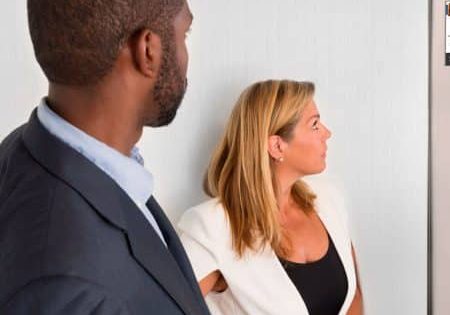Video Communication PER ASME A17.1 2019
Apr 1, 2020
This Readers’ Platform clarifies new code requirements for two-way video communication in elevators.
by John Pierce
There has been much talk regarding a new code requirement stating there must be two-way video communication in elevators beginning this year. We will discuss the truth in that, how the requirement came about, what the International Building Code (IBC) added in 2018 and what the ASME A17.1 Standards Committee has put into writing for the elevator community.
Discussion to change the regulations began when a group determined that the two-way voice communication system that has been standard in elevators for years did not provide an adequate communication means for the hard of hearing. This group pressed the International Code Council (ICC) to incorporate a solution into the 2018 IBC. ICC’s solution is vague and difficult to enforce, because it lacks references to technical criteria or other standards. The IBC standard also adds complexities for call centers. Cameras are required, both in the elevator and at the monitoring company. Staff who know sign language and/or can send text messages back and forth through the video system are required.
Understanding the complexities of the IBC proposal, the A17.1 group came up with a simpler solution that is much easier to use and install, while still meeting the intent of the IBC wording. The A17.1 solution is less impactful on cost, in both materials and to the building owner. It still involves a video screen and camera in the car but does not require a camera at the monitoring company. “Yes” and “No” response buttons are in the car. Where the elevator rise is 60 ft or more, internal building communication that allows for both voice and video is required. This means must also provide communication if an internet connection is lost.
The following is how an actual call would progress. A trapped passenger activates the normal call or phone system in the car that calls a monitoring company. The monitoring company receives the call, and the “location” message plays. The message includes an indicator stating there is a video system in the elevator. Two-way voice communication begins at that point. If the monitoring person does not receive a response, they activate a link on their desktop that pops up a viewing site where they input the video system identification. Then, the camera activates, showing the floor of the elevator. They can dispatch emergency services if they see a person lying on the floor. If the person is standing, they type a message to them from their keyboard that displays on the video screen in the car. The trapped person can respond by pressing the response buttons.
This new code may be a boon to monitoring companies, because a building owner can’t simply direct a call to 911, as 911 would not be equipped to access and view elevator cameras. It will also reduce the number of false-call dispatches.
RATH Communications’ website (www.rathmicrotech.com) includes information for monitoring companies to demonstrate how simple it is to accept and process a call for this new code. It also features a short video that provides a clear understanding of system operation and how the monitoring company would answer a call and communicate with a trapped passenger.
Get more of Elevator World. Sign up for our free e-newsletter.








